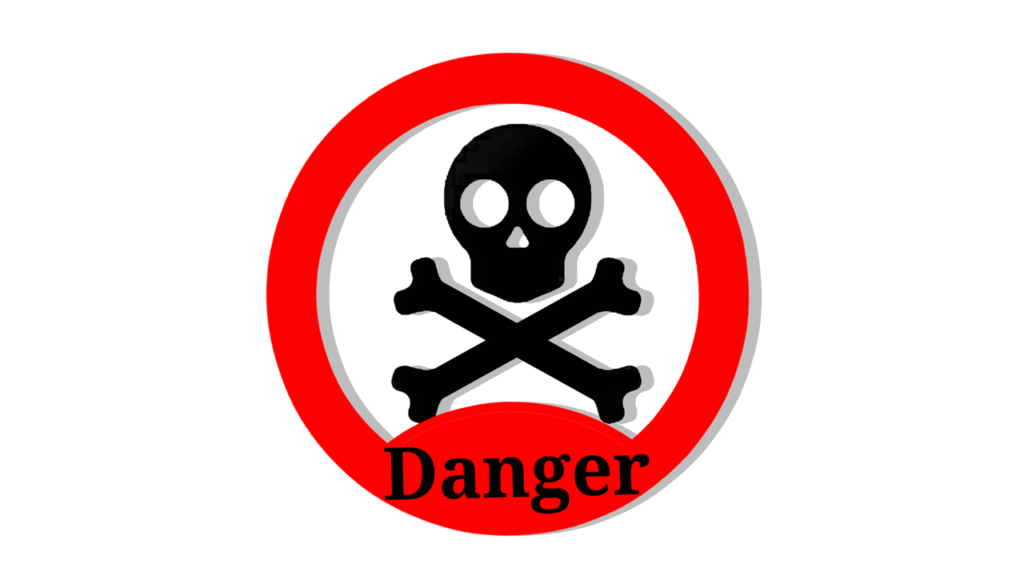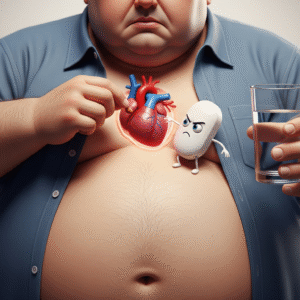Do I really have Vitamin D Deficiency?
Table of Contents
What is this article about?
It seems there is a pandemic of Vitamin D deficiency. Everyone around me, including me, is having Vitamin D deficiency. This is despite the fact that I and people whom I interact with regularly have good access to nutritious food. Sunlight falling on our skin is said to generate massive amounts of Vitamin D. Being in a tropical country like India, sunlight is abundant. Then why is everyone around me is Vitamin D deficient? Some “experts” say that we spend too much time indoors and hence our exposure to sun is limited. According to these “so called” experts, because of this indoor centric lifestyle, Vitamin D deficiency is a natural outcome.
In this article we try to investigate the truth about this Vitamin D deficiency.
How much of Vitamin D is adequate?
Vitamin D is a fat soluble vitamin. It is also known as cholecalciferol. Vitamin D can be obtained from the diet through the ingestion of fatty fish and eggs, milk or margarine etc. However, our body doesn’t have to depend on food at all for generating Vitamin D. Human body is able to make Vitamin D endogenously when UV light from sun strikes the skin. Infact, 80-90% of our body’s Vitamin D come from this route.

Vitamin D obtained from sunlight or food is inactive in its original form. This inactive Vitamin D needs undergo two activations before Vitamin D actually starts performing its functions. First activation occurs in liver. This activation results in formation of a compound called 25-hydroxyvitamin D. Represented as 25(OH)D, 25-hydroxyvitamin D is also known as “calcidiol“. Next activation happens in the kidney. This last part of activation results in the final active form of vitamin known as 1,25-dihydroxyvitamin D [represented as 1,25(OH)2D], also called calcitriol.
Vitamin D levels in the laboratories are measured by calculating levels of 25(OH)D. 1,25(OH)2D is not used for this measurement simply because it is highly volatile and depends on lot of other factors. Also 1,25(OH)2D levels typically doesn’t decrease unless the individual is severely deficient.
All laboratories worldwide use 20 ng/ml (50 nmol/L) as the threshold below which anyone is designated as Vitamin D deficient.
So, to quickly summarize,
- Vitamin D can be derived from food or sunlight. Our body is not dependent on food.
- Vitamin D gets converted to 25(OH)D (or calcidiol) in liver and then finally to the final active form -1,25(OH)2D (or calcitriol) in kidneys
- Vitamin D levels are calculated by measuring levels of 25(OH)D in blood
- Vitamin D deficiency is defined as 25(OH)D <20 ng/ml (50 nmol/L)

Why is it so surprising that Vitamin D Deficiency Is Common World-Wide?
Below what level of 25(OH)D should be denoted as deficiency is a matter of debate amongst experts.
20 ng/ml (50 nmol/L) is being commonly used the cutoff value below which an individual is considered deficient in Vitamin D. However, use of this value is just a matter of popularity and not accuracy- this issue has been cautioned against by several experts. This cut-off value has tremendous implications. For example, it has been estimated that threshold of 50 nmol/L to define vitamin D deficiency would place a crude estimateof∼387 million individuals at risk in North America and Europe alone, whereas use of the 30 nmol/L threshold would put∼120 million at risk.
Based on current definition used by laboratories, there is a very high prevalence of vitamin D deficiency worldwide. About 1 billion people globally have low Vitamin D levels. Such low levels of Vitamin D seems to be universal in nature and is found in all ethnicities and age groups. What is really surprising is that this Vitamin D deficiency epidemic is seen even in countries where it was generally assumed that exposure to sunlight’s UV rays was adequate enough to prevent vitamin D deficiency. Similarly, it is surprising to find such a high prevalence of Vitamin D deficiency in industrialized countries, where vitamin D fortification has been implemented now for years.

Again, to quickly summarize,
- The cut-off of 20 ng/ml (50 nmol/L) for defining Vitamin D deficiency, although globally used, is an arbitrary value and highly debatable
- It is surprising to find Vitamin D Deficiency so common in developed countries, although food intake and awareness is no longer a challenge in these countries.
- It is also surprising to tropical countries, where sunlight is so abundant annually, to be reeling with the issue Vitamin D deficiency. We know that 80-90% of our body’s Vitamin D come from sunlight.
Why is it nearly impossible to be NOT Vitamin D Deficient?
Evolution of 20 ng/ml as definition of Vitamin D Deficiency
The Washington based Institute of Medicine (IOM) keeps issuing nutrient reference values that serves as a guidance for interpreting nutrient levels measured in any individual. In 2011 IOM estimated that 20 ng/ml is an appropriate level for 25(OH)D. IOM also was quoted recommending supplementation with 600 to 800 IU of Vitamin D per day
And since then, labs worldwide started using 20 ng/ml as the lower threshold, below which any one will be labelled with Vitamin D deficiency. But, its really a misinterpretation of what IOM really means by appropriate levels.
Dietary requirements are unique for each individual
Let’s try to understand how the IOM defines nutrient reference values and what they really reflect. These nutrient reference values specified by IOM are also popularly known as Dietary Reference Intakes (DRIs). The IOM develops these DRIs for a large range of nutrients. IOM understands that each individual is unique and its a biologic reality that the need for any nutrient varies from person to person. When each of these individual need is measured for a large population and plotted, it would generally look like an inverted U shaped curve. This inverted U shaped distribution of individual data is, in statistics, known as normal distribution. The dietary requirement of majority of the individuals in a population would be around the center of this inverted U.
Most individuals dietary requirement will be around Estimated Average Requirement (EAR)
The DRI values consist of two components- an Estimated Average Requirement (EAR) and a Recommended Dietary Allowance (RDA). EAR is the median of the distribution of human requirements for that nutrient. This way to interpret EAR is to imagine that approximately 50% individuals will have dietary requirements above EAR while another 50% individuals will have requirement below EAR. EAR for a nutrient is a simple answer to the question- what is the most likely requirement of nutrient for the population in question.
RDA, on the other hand, refers to the estimated dietary requirement for people at the highest end of the distribution. Without going into the statistical depths of normal distribution, all you need to remember is that practically everyone in the population (at least 95%) will have a requirement below the RDA.

What you need is EAR- What you are measured against is RDA!
Let’s come back to Vitamin D. For persons below 70 years of age IOM has set EAR for Vitamin D at 400 IU per day. This quantity is believed to achieve serum concentration of 25(OH)D to 16 ng per milliliter (40 nmol per liter). For achieving similar serum concentration of 25(OH)D for persons above 70 years of age, EAR recommended is 600 IU per day.
What does this mean? If your dietary requirement is similar to majority of the population IOM is referring to and your diet is satisfying that requirement, you will always be labelled as Vitamin D deficient. This is because your serum concentration of 25(OH)D will be around 16 ng/ml (which is normal for your requirement), which is lower than the threshold of 20 ng/ml.
So when do you cross this threshold and stop being labeled as Vitamin D deficient? This is achieved only when you move your intake from EAR to RDA. For persons below 70 years of age IOM has set RDA for Vitamin D at 600 IU per day. It is only at this quantity of daily intake of Vitamin D that a person below 70 years age will achieve serum concentration of 25(OH)D to 20 ng/ml (50 nmol per liter). For achieving similar serum concentration of 25(OH)D for persons above 70 years of age, RDA recommended is 800 IU per day.
We just saw that RDA represents requirements dietary requirements on those individuals who requirements are higher than 95% of the individuals IOM is referring to. So, you will achieve serum concentration of 25(OH)D >20 ng/ml only if you daily have Vitamin D at very high levels which is normal only for 5% of population.
It is because of misrepresentation of this understanding of EAR and RDA that today nearly everyone around us including us get tricked into the belief that we suffer from Vitamin D deficiency. It is misconception (I believe its a deliberate one) that the RDA is a “cut- off value” and that everyone must have a serum 25(OH)D level above 20 ng/ ml. The reality is that the majority (more than 95%) of the population has a requirement of less than 20 ng/ ml. Approximately half the population has a requirement of 16 ng/ml (which is the EAR) or less.
At this point it is important to note that a very important point- EAR and RDA recommendations from IOM assume minimal to no sun exposure. This assumption is required because it is impossible for IOM to quantify and record daily sunlight exposure of every individual in its study population. However, knowing that 80-90% of our body’s Vitamin D come from this route, this assumption of minimal to no sun exposure also leads to a significant error which cannot be corrected.
Definition of Deficiency Might Not be Applicable to Most Anyways!
We earlier noted that IOM determines EAR and RDA for any nutrient by measuring individual requirements for a large population. Such population which is studied to determine these values is known as study population. Individual needs for a large set individuals from this study population are collected and studied. This set, that represents the study population, is known as sample. When each of these individual needs from the sample is measured and plotted, it would generally look like an inverted U shaped curve (known as normal distribution curve). The interpretations from this normal distribution curve (that results in EAR and RDA recommendations by IOM) can be extrapolated for the corresponding study population from which the sample was chosen. This curve cannot be used for judging any other population.
Unfortunately the samples and the study populations used by IOM might not represent most of us. I am an Indian and I am not sure if the samples used for recommendations made by IOM can represent my dietary needs. IOM’s valiant attempt to determine DRIs for all nutrients has been a jointly supported by US and Canadian governments. Naturally, the study population used by IOM generally is highly skewed and would be highly representative of American- Canadian population. But what about people from India, Africa or China? Can people residing in these countries use nutrient recommendations made by IOM?

Imagine a country with people having an average height of 7 feet in adults. Now let’s say my height is 5 feet. Now lets say someone from IOM decides to determine “normal” height for adult humans. Immediately I will be marked as abnormal. Soon I will be investigated for my abnormality and I will be prescribed health supplements to help correct my abnormality. There will be thorough investigations on my diet history and guidelines will be released detailing what I should have eaten to prevent such mishap. But, fact might be, I may not be represented by the population where average height is 7 feet. What if, I am a Nepali and in Nepal average height is around 5 feet? Where 7 feet is normal in this country, might be actually abnormal in Nepal. So- how do you really define what is normal and what is not?
Vitamin D contributes to better bone mass. It is known that Black Americans generally have very low levels of serum 25(OH)D compared to rest of Americans and have been always been considered as Vitamin D deficient. However, we now know that blacks actually need very little amount of 25(OH)D in their blood to remain healthy. In fact, these so called “Vitamin D deficient” blacks generally have better bone mass than whites. Supplementing them with high doses Vitamin D has never helped gain any health benefits. Instead of really understanding that each population might have its own requirement of Vitamin D, there has been a specific attempts by global health experts to enforce labelling blacks as Vitamin D deficient.
There is an “Artificial” Pandemic of Vitamin D Deficiency
Fact must be told here that IOM never stressed on achieving Vitamin D levels above RDA. The goal of the policy makers must to ensure population achieves and stays above EAR and NOT RDA. However, respected scientists and experts in various publications have thoroughly misapplied the concept of RDA by treating it as the “cut-off value”, though RDA is actually at the upper end of the spectrum of human need. Such misuse and misrepresentation has resulted in misclassifying most people as “deficient” although their nutrient requirements are being met normally. Truth is- there is NO pandemic of Vitamin D deficiency. Its just a widespread imaginary fear with no reality.
Once you identify this error and start applying the results correct, picture changes drastically. Some experts have now estimated that 12.5 ng/ml might be the appropriate cut- off and NOT 20 ng/ml. Data from the National Health and Nutrition Examination Survey (NHANES) for 2007 through 2010 reveals that, if IOM definitions are correctly applied, actually less than 6% of the Americans might be deficient in vitamin D.
This is definitely not a pandemic!
So, we might end up having higher that required amount of Vitamin D. Is there any harm?
Vitamin D is a fat soluble vitamin, unlike Vitamin B or Vitamin C which are water soluble. Hence, excess of Vitamin B or C gets easily removed from the body. But excess of Vitamin D will get stored in our body fat.
The Tolerable Upper Intake Level (abbreviated here as UL) is the level defined by IOM above which a nutrient starts becoming toxic. For Vitamin D, this level has been estimated at 4000 IU per day which will result in serum 25(OH)D concentration of approximately 50 ng per milliliter (125 nmol per liter). Beyond tolerable levels, Vitamin D results in excess of calcium released into our blood which can have devastating impact. Initial symptoms of vitamin D toxicity include anorexia (lack of appetite), diarrhea/ constipation, nausea, and vomiting. Bone, muscle and joint pain, sleepiness, incessant headaches, irregular heartbeat, pain are other symptoms that appear within a few days or weeks. These are accompanied by frequent urination, especially at night, excessive thirst, weakness, nervousness, itching, development of kidney stones and kidney failure.

Errors in Vitamin D fortification or issues with manufacturing have lead to Vitamin D toxicity in masses. Overfortification of vitamin D in milk resulted in Vitamin D toxicity in a local population in US, leading to at least 56 cases. 41 required hospitalization and there were two deaths.
A New Zealand study of 14 vitamin D formulations revealed that only eight were within 10% of the stated dose. Similarly, a US study demonstrated that, of the 15 vitamin D preparations analysed, there was substantial variation compared to the stated dose, both in pills from the same bottle (52–136% of expected dose) and between separate preparations (9–140% of stated dose). Only one‐third of the pills analyzed had Vitamin D within 10% of the stated dose. On similar lines, US studies on the food products fortified with vitamin D have also revealed wide variations from the stated dose. Such variations between stated and actual doses have caused deaths.
One patient ended up with kidney failure due to vitamin D toxicity in a subject taking vitamin D at a stated dose of 2000 IU/ day, Later, when the medication was analyzed, it was revealed that actual dose delivered touched 2.6 million IU/ day. Another US study reported about a woman who suffered with vitamin D toxicity while she was taking 400 IU of Vitamin D supplement. On analysis it was found that this supplement actually contained 188,000 IU and not 400 IU. Similarly there have been reporting of three cases of vitamin D toxicity, where the patients had been treated with a vitamin D formulation with a stated dose of 600 IU, whereas, in fact, the actual content was 52,800 IU. Seven children suffered from vitamin D toxicity in association with a fish oil supplement, where the actual dose was 4000 times higher than what was stated.
Pushing billions of people across the world take exceedingly high amounts of Vitamin D daily, thus, has enormous associated risks. When doctors are recommending that your daily intake must cross RDA, most probably you would end up taking Vitamin D in amounts way beyond what is really required by your body. In fact, there will be a large set of people whose daily requirements are really low and for them RDA recommended Vitamin D intake might lead to Vitamin D toxicity. Widespread vitamin D fortification of foods and drinks from the 1930s to 1950s in the United States and Europe led to reported cases of Vitamin D toxicity.
Is this “Artificial” Pandemic of Vitamin D Deliberate?

Vitamin D market was valued at US$ 1.0 billion in 2019. It is projected to touch US$ 1.6 billion by 2025 and continue growing at a CAGR of ~6.5%. Its a huge business.
And its a business propelled by a pandemic of fear that has evolved in two stages:
- Stage 1: Establishing a global level fear about how disastrous Vitamin D Deficiency is
- Stage 2: Proving that most people in this world are Vitamin D Deficient
I have to make a declaration here. This blog is not designed to discuss Stage 1 and is purely focused on Stage 2. I will be shortly writing a detailed blog on real truth regarding impact of Vitamin D supplementation on human health.
But, Stage 1 has been highly effective and successful. It is now a world wide view that Vitamin D supplementation is a must for ever growing kid, mother, elderly and is needed in most diseases- else the outcomes can be bad for health! Global experts on this subject have been effectively hired by industry to create this state of fear. One documented example is Dr. Michael Holick. Dr Holick is an endocrinologist from Boston University who, reportedly, is responsible more than anyone for ensuring widespread testing for Vitamin D deficiency and unrestricted prescription of Vitamin D supplements. He has been quoted to imply that dinosaurs might have gone extinct because of diseases caused by Vitamin D deficiency!
Best part is how money and influence can turn the tide of scientific opinion. In late 2010, a group of independent scientific experts from the prestigious National Academy of Medicine (then known as the Institute of Medicine) issued a comprehensive report on vitamin D deficiency that ran into 1132 pages. This report concluded that the vast majority of Americans get plenty of Vitamin D naturally, and advised doctors to test only patients at high risk of certain disorders, such as osteoporosis.
A few months later, in June 2011, Dr. Holick authored publication of a report that took a tangentially different view. This paper by Dr Holick, published in the peer-reviewed Journal of Clinical Endocrinology & Metabolism, was on behalf of the Endocrine Society. Endocrine Society is highly regarded- its guidelines are widely used by hospitals, physicians and commercial labs nationwide. The society promoted Dr. Holick’s view that Vitamin D deficiency is very common in all age groups. It also advocated a huge expansion of vitamin D testing, targeting more than half the United States population. While 20 ng/ml itself is a very high level as cut-off for diagnosing Vitamin D deficiency, in 2018 Endocrine Society was found pushing for 30 ng/ml as the right cut- off.
Dr. Holick, along with several others, was instrumental in drafting national vitamin D guidelines for the US in 2017. These guidelines helped push Vitamin D supplement sales to $936 million in 2017 in the US- a nine fold increase over the previous decade. Lab tests for vitamin D deficiency also spiked up- doctors in US ordered more than 10 million for Medicare patients in 2016, up 547 percent since 2007, costing $365 million.
It seems that doctors like Dr Holick get generous funds from industries which profit from either Vitamin D testing or Vitamin D supplement sales. A Kaiser Health News investigation for The New York Times had revealed that Dr Holick used his influential position in the medical community to promote Vitamin D. Such promotion went on to financially benefit corporations that have been regularly funding him with thousands of dollars. These funding institutes include pharmaceutical companies, companies focusing on indoor tanning and one of the largest commercial labs in the US.
In 2010 Dr Holick published a book “The Vitamin D Solution,” In this book Dr. Holick encouraged readers to get their blood tested. For readers worried about potential out-of-pocket costs for vitamin D tests — which range between $40 and $225 — Dr Holick listed precise reimbursement codes that doctors should use when requesting insurance coverage.
Dr Holick has been working for Quest Diagnostics (one of the largest diagnostic laboratories in the US) for four decades — he is currently paid $1,000 a month. According to Medicare’s Open Payments database, Dr Holick received nearly $163,000 from 2013 to 2017 from pharmaceutical companies including those interested in selling Vitamin D.
Because common man rarely understands the concepts of medicine and human biology, experts of global acclaim such as Dr Holick are highly influential. Their opinions are trusted and followed and end up becoming words from gospels. Leading doctors across the world are following what experts such as Dr Holick suggested about Vitamin D deficiency, without really questioning. I personally have no experience with Dr Holick. Neither do I have anything personal against Dr Holick. Maybe there is another side of this story about experts like Dr Holick which I might not be aware of. But there is a concerted and definitive effort by a large set of experts funded by Vitamin D industry to prove that Vitamin D supplementation is magical for health and that we are all Vitamin D deficient.
The “artificial” pandemic of Vitamin D deficiency of Vitamin D is in full swing!
Final Thoughts
Each individual is unique and his/her normal might not match what is defined normal for an unrelated set of individuals. The IOM reference values derived from Americans and Canadians cannot be used to determine my normal dietary requirement for Vitamin D to maintain normal health.
Given the lack of any other reference standard, lets say we still try using IOM’s recommendations and generalize. In that scenario its foolish to push for RDA which is very high and represents dietary requirements of < 5% of population. Serum concentration of 25(OH)D at 20 ng/ml is achieved only with RDA, potentially risking >95% population with the diagnosis of Vitamin D deficiency. By pushing for RDA and diagnosing everyone with Vitamin D deficiency we are also risking a large section of our population to the hazards of Vitamin D toxicity.
Ideal way forward is to push for population to be above EAR which represents the center of the normal distribution curve for Vitamin D requirements. What it means in simple language is that majority will have dietary requirements around EAR. Some might argue that this might risk Vitamin D deficiency for many. To which, my argument is that, first- 80-90% of our body’s Vitamin D come from sunlight exposure and NOT food, and second- IOM data is not anyways not representative of dietary requirements for many and we use it just because we don’t have anything better.
Based on this, 20 ng/ml as cut-off to diagnose Vitamin D deficiency is illogical and it should be actually 12.5 ng/ml. To be on the safer side, one may consider 16 ng/ml individuals as “at risk” for Vitamin D deficiency. Also some populations (viz. blacks and probably Indians as well) have very low requirement of Vitamin D to live healthy life. We need to treat patients and not lab reports. We need to be careful to judge anyone as Vitamin D deficient when clinically there are no related signs or symptoms.
It now seems recommendations by IOM regarding Vitamin D requirements have been thoroughly misinterpreted and abused. Given the fact that these interpretations come from leading experts in this field, it might not be just a case of harmless ignorance, but a deliberate attempt to push profits for Vitamin D industry.






Nice post
Thank you!
It is said statistics is base of manipulation…it can be used, interpreted in any manner depending upon objective to be achieved. It is just like a law….can be shaped, twisted DEPENDING UPON perception of facts of the case. Very nicely illustrated by the author and it an eye opener for anyone who is a cautious opinion former.
Very true Mr Govind. Statistics is merely a tool- just like a knife. Whether one uses it to cut vegetables or throats is purely dependent on the the wielder.
Excellent, well researched
Thank you Naresh!
Startling Revelations…particularly vit d preps.. Whose Label claim is 400 i u but contain far in excess..
India is not an exception working on conventional wisdom..finding people in sun drenched country with D deficient…
you can see..ubiquitous 64 k Vitamin D Brands
Yes Suresh. Once needs to take informed decisions and be careful
Dear subir
Do we apply same to hemoglobin, TLC DLC,
blood electrolytes, plasma proteins, RBC value etc between Americans and Indian/ nepali for these values of reports??????
Ideally we should. But, we don’t just to keep things simple.
Hence, the best rule to follow is to treat patients and not their lab reports!
I had read before of Vitamin D deficits – and that we should all go outside and bare our skin to the sun for a half hour a day – that’s all it would take to improve our vitamin D levels. This world seems very fixated on pills. And, once upon a time, I believed the hype – you get to the point where you have a cabinet full of vitamins with claims to fix everything, yet, they have to be taken in conjunction with something else in order to be absorbed – and you’re stuck in the end with a bucket of pills to swallow, several times a day – and, a lack of any true reason for why all this sacrifice when it all ends with swallowing mass degrees of something unpleasant – for a suggestion that it’ll improve your health.
Health should come from good food choices, a healthy lifestyle, and appreciating every minute of it. I’m not saying to live in ignorance – but, the end of the day – vitamin pills aren’t a proven by FDA science. Food is.
Kudos to a very interesting website – I’ve got a lot of reading ahead of me to catch up.
Thanks Rose for this in depth comment. I fully agree with your views. Just go out in the sun- that’s all the vitamin D you will ever need! And if there is no sunlight, milk and routine food are all enriched with Vitamin D. There is really no need of these pills for most of us.
Well researched and relevant to the current times.
Thanks for keeping us informed.
Thanks Gunjan!
Amazing Subir for bringing the facts in such an interesting manner… I think 2SD of deviation should be considered as cutoff. 1 interesting thing I came to know is that “Pills deliver too huge doses”…. and very few countries have testing mevhanisms for it
I don’t know what should really be the cut- off. I believe each person is different is to define normal values for a population and start medicating those who don’t fit in that range is unfair. If you eat normally, Vit D deficiency cannot happen unless there is a disease process driving it. So, unless there is a disease that you have diagnosed, it’s incorrect to judge Vit D values and treat the deficiency.
I am coming to believe that inflammatory processes use Vitamin D as “fuel” to drive inflammation. If this is true, then without treating the disease adding Vitamin D will be like adding fuel to the fire.
For my thesis, I consulted a lot of information, read your article made me feel a lot, benefited me a lot from it, thank you for your help. Thanks!
Thanks for sharing. I read many of your blog posts, cool, your blog is very good.
Fantastic article.Much thanks again. Fantastic.